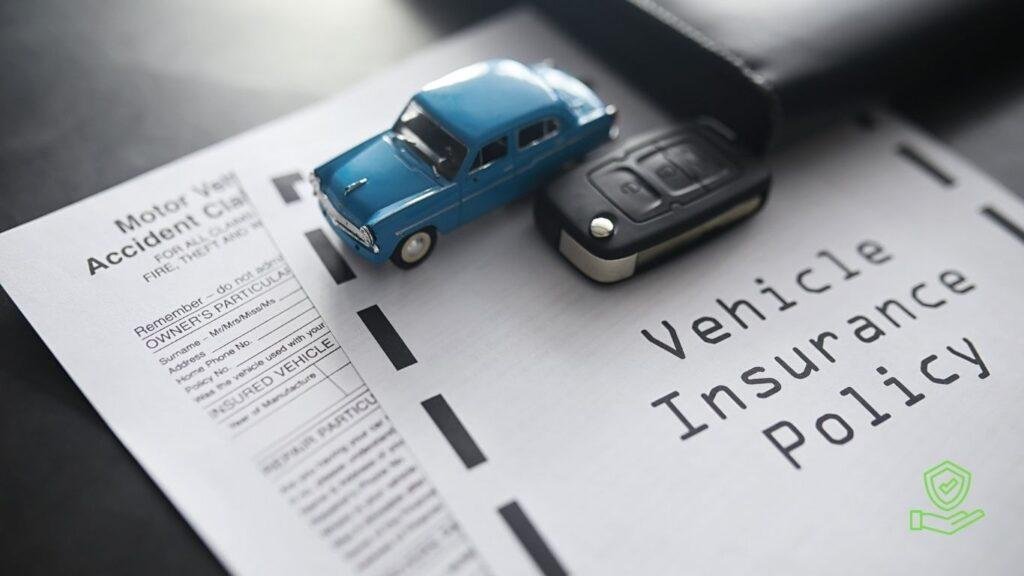Table of Contents
Car insurance can feel confusing — and expensive. In 2025 many drivers are seeing higher premiums, wider variation by state, and more choices from digital-first insurers and traditional carriers. This guide breaks everything down: the types of coverage, average costs, how insurers calculate rates, the top companies to consider, and actionable ways to save.

1 — Quick snapshot: Who’s winning in 2025?
Editorial reviews and industry studies in 2025 highlight a mix of large national carriers and well-rated regional insurers depending on what you value (price, claims service, digital tools, or discounts). Recent editorial rankings point to insurers like Travelers, Auto-Owners, American Family, State Farm and USAA among top overall picks — selected for affordability, customer service, financial strength and complaint levels. NerdWallet
J.D. Power’s 2025 U.S. Auto Insurance Study is a good barometer of customer satisfaction; they evaluate insurers on trust, price, people, ease of doing business, product offerings, problem resolution and digital channels. If service and claims experience matter most to you, J.D. Power’s regional findings are worth checking when comparing companies. J.D. Power
2 — What “full coverage” actually means (and what it doesn’t)
“Full coverage” is industry shorthand, not a legal term. Typically it means you have:
- Liability insurance — pays for damage and injuries to others if you’re at fault (mandatory in most states).
- Collision coverage — pays to repair or replace your vehicle after a crash with another vehicle or object.
- Comprehensive coverage — covers non-collision damage like theft, vandalism, fire, flood, or hitting an animal.
Optional additions often include uninsured/underinsured motorist coverage (important if the other driver lacks enough insurance), medical payments or personal injury protection (PIP), and roadside assistance. Don’t assume “full coverage” includes rental reimbursement or gap insurance — those are add-ons. Allstate+1

3 — How much does car insurance cost in 2025?
The national average depends on the type of policy and your personal profile, but recent figures show full-coverage premiums averaging roughly between $2,300 and $2,700 per year nationally in 2025. Minimum-liability-only policies average much less (often in the several hundreds per year), but liability-only leaves you with more out-of-pocket risk. Rates rose significantly in recent years due to claims frequency, higher repair costs, supply-chain-related parts inflation, and rising crash/severity statistics. AutoInsurance.com+1
Important: your cost will vary dramatically by state, ZIP code, age, vehicle, driving history, credit (where permitted), and coverage choices. Use multiple quotes — it’s common to find very different prices from three top insurers.
4 — Why rates went up (and may continue to)

Main drivers of rate increases in recent years:
- Repair and parts inflation: Modern cars are more expensive to fix (advanced driver assistance systems, electrified components).
- Higher claims severity and crash costs: More costly claims per incident.
- Weather and catastrophe losses: Severe weather increases comprehensive claims.
- Theft rates for certain models: Some vehicle models saw theft surges raising premiums.
- Economic inflation overall (labor, parts, medical).
Insurers adjust prices to match claims trends and regulatory approvals; that’s why rates can spike regionally and then be revised. Kiplinger+1
5 — Top companies to consider (by bucket)
Different drivers need different strengths. Here’s a practical grouping based on national reviews and pricing studies:

Best overall (balance of price, service, strength)
- Travelers, Auto-Owners, American Family — highlighted by editorial ratings for overall quality. NerdWallet
Best for value / cheapest minimum coverage (if price is primary)
- GEICO, MAPFRE, smaller regional insurers like Shelter and Acuity often appear among cheapest options for minimum coverage in price analyses. Always check whether the cheap option still provides the coverage you need. NerdWallet
Best for customer satisfaction / claims handling
- USAA (for military members/families), Amica (often high in customer satisfaction surveys) — J.D. Power and other studies frequently show these names near the top in claims experience. J.D. Power+1
Large national market-share players
- State Farm, Progressive, GEICO, Allstate have the largest market shares — good for broad agent networks, digital tools, and a wide range of discounts. NerdWallet
Pick the bucket that matches your priorities: cheapest available, best claims service, or widest reach and digital features.
6 — How insurers actually price you (short version)
Insurers combine many inputs into a personalized rate: age, driving record, miles driven, vehicle make/model, location (ZIP-level risk), credit score (in many states), coverage limits and deductibles, prior claims, and sometimes telematics data if you opt into usage-based programs. Discounts (multi-policy, safe driving, good student, defensive driving, low mileage) then lower the calculated premium.
Small changes — like raising your deductible or dropping unnecessary coverage on an older car — can meaningfully cut premiums, but always weigh savings against potential out-of-pocket risk.
7 — How to shop (step-by-step)
- Inventory your needs: loan/lease requirements, minimum state liability limits, whether you need gap or rental coverage.
- Decide on coverage targets: e.g., full coverage with $500 deductible, or liability-only for an older paid-off car.
- Get at least 3 quotes: compare same coverage limits/deductibles across carriers. Use insurer websites, aggregator sites, and independent agents.
- Check complaints & financial strength: use state insurance department complaint ratios or AM Best/NAIC and consumer review sites.
- Ask about discounts: bundling auto + home, safe-driver, low-mileage, defensive driving, paperless, telematics.
- Time your switch: avoid coverage gaps; start new policy same day old one cancels.
Editorial teams recommend shopping annually — many people haven’t compared rates in years and overpay as rates shift. Kiplinger
8 — 15 proven ways to lower your car insurance premium
- Shop around and compare every year.
- Raise your deductible (if you can afford it).
- Bundle policies (auto + home/renters) with the same insurer.
- Drive fewer miles or use low-mileage discounts.
- Take a defensive driving course (many insurers give credits).
- Maintain a clean driving record — avoid tickets and at-fault accidents.
- Ask about available discounts (student, multi-car, military, loyalty, paperless).
- Consider telematics (usage-based programs that reward safe driving).
- Remove optional coverages you don’t need on older vehicles (e.g., collision if the vehicle is worth less than the deductible + annual premium).
- Pay annually if there’s a discount vs. monthly installments.
- Improve credit score (where insurers use it) — better scores often mean lower premiums.
- Choose a safer vehicle (cars with safety ratings, anti-theft devices, lower repair costs).
- Park in a garage (less theft risk than street parking).
- Keep claims small out-of-pocket where it’s cheaper than filing a claim that raises rates.
- Ask an independent agent to quote niche regional insurers — smaller regional companies can be cheaper for some drivers.
9 — State-by-state variation and legal minimums
Auto insurance is regulated at the state level — minimum liability requirements differ widely. Some states are “no-fault” with PIP requirements; others require SR22 filings after certain violations. The NAIC and state insurance departments publish state-level data and average premium tables — a necessary check because your state can drive a large part of your premium. If you live in a high-theft or high-accident ZIP code, expect higher rates. NAIC
10 — Special cases: military families, young drivers, high-risk drivers
- Military families: USAA is consistently a top pick if you qualify — strong service and competitive rates, but membership is restricted to military communities. Money
- Young drivers: Look for multi-car discounts, good-student discounts, telematics programs, and compare insurers that offer strong young-driver pricing.
- High-risk drivers: SR22 filings, DUI history, or multiple at-fault accidents can make premiums many times higher; consider state-run assigned-risk pools or specialty insurers as interim options while you rebuild a clean record.
11 — Claims: what to expect and how to speed things up
When you need to file a claim:
- Ensure safety first.
- Document thoroughly — photos, witness info, police report if applicable.
- Report the claim promptly through the insurer’s app, website, or agent.
- Review settlement offers — get repair estimates and ask about OEM parts vs aftermarket.
- Keep records of related expenses (taxis, medical bills, rentals).
Insurers are graded on claims handling and response time; if claims service matters to you, weigh satisfaction surveys (J.D. Power) in your choice. J.D. Power
12 — Final checklist before you buy
- Do you meet your state’s minimum requirements?
- Do you need full coverage (loan/lease) or would liability-only make sense?
- Are your chosen deductibles affordable if you have a claim?
- Have you compared at least 3 quotes with identical coverage?
- Have you checked discounts you qualify for?
- Did you confirm insurer financial strength and complaint records?
Bottom line
There’s no single “best” insurer for everyone in 2025. The right choice depends on your priorities: lowest price, excellent claims handling, a strong digital experience, or discounts for your lifestyle. Rates are higher than they were a few years ago, so comparison shopping and smart adjustments (higher deductible, discounts, usage programs) are the fastest ways to protect your wallet without sacrificing essential coverage. For service-focused buyers, consult recent J.D. Power rankings and company-specific reviews; for price-focused buyers, get multiple quotes including regional insurers. J.D. Power+2NerdWallet+2
Tell me which of those you want and I’ll create it — ready for publishing.
https://shorturl.at/PHyXF